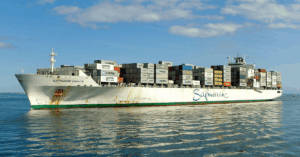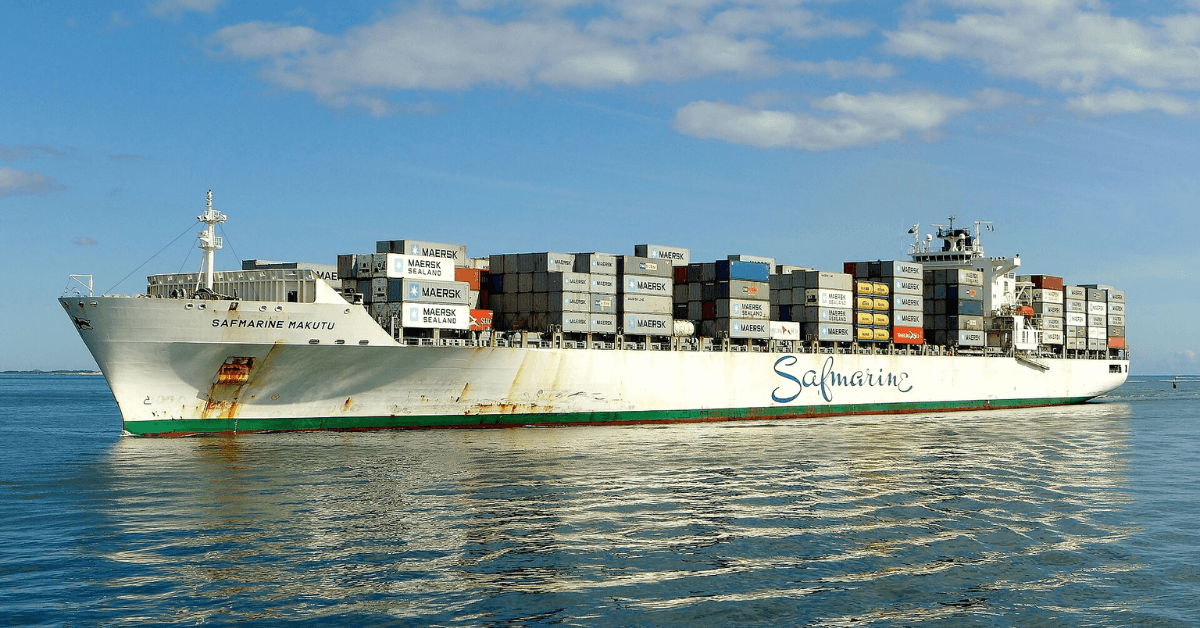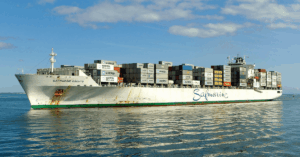
Port Of Amsterdam Powers Up Shore Connection For Cruise Ships
June 5, 2025
Royal Navy Flagship Sails Into Indian Ocean For Next Stage Of Global Mission
June 5, 2025

South Africa has officially started the process of creating a new national shipping line for the first time in more than 25 years.
The Department of Transport released a public notice on May 30, inviting shipping companies and stakeholders to apply within 30 days to become part of a steering committee that will guide the development of the new state-owned carrier, expected to be named the South African Shipping Company (SASCO).
This is the first concrete step taken to turn a long-discussed plan into reality. The idea of a national shipping line has been discussed for nearly a decade, with policy work starting in 2017 under the Comprehensive Maritime Transport Policy (CMTP).
Now, under the leadership of newly appointed Transport Minister Barbara Creecy, the plan is finally moving forward. According to the Department, the main goal is to help South Africa reduce its overwhelming reliance on foreign shipping lines for moving its imports and exports.
Officials say that the country’s trade performance has seen negative growth since the 1980s, and a major reason is the absence of a national carrier. The new company will aim to carry a significant portion of the country’s seaborne trade under the South African flag.
The steering committee will include members from the Department of Transport, the Development Bank of Southern Africa (DBSA), the Industrial Development Corporation (IDC), and other relevant stakeholders. It will be responsible for designing the business model and drafting the Terms of Reference for the national shipping line.
The Department said that this project is part of “radical measures” meant to revive the maritime transport sector and enable South Africa to move its cargo. The CMTP identifies the establishment of a national carrier as a strategic pillar for growing the ocean economy and restoring maritime competitiveness.
As of now, South Africa is the only country among the BRICS group, which includes Brazil, Russia, India, and China, without a national shipping company. The last time South Africa had one was with Safmarine, a company founded after World War II.
Safmarine operated until 1999 when it was sold to Danish shipping giant AP Moller-Maersk. Maersk continued using the Safmarine brand until 2020, when it officially phased it out and ended all ties to the South African flag.
The government plans to explore both new shipbuilding and secondhand purchases to form the SASCO fleet. The proposed types of vessels include containerships, crude oil tankers, chemical tankers, dry bulk carriers, coastal cargo vessels, and bunker barges. All of them will be South African-flagged.
This initiative follows a 2022 draft legislation that supported establishing a national carrier. According to that plan, the company was to be set up by 2023 and own at least one ship in each major shipping category.
Since the release of the 2017 maritime transport policy, the government has also committed to giving locally-flagged vessels preferential access to South African ports, which is expected to support the new national carrier once it’s launched.
However, not everyone is fully supportive of the idea. Some domestic shipping interests have raised concerns that the creation of a state-owned company might reduce competition, particularly in the coastal trade segment.
Despite the concerns, government officials remain confident that SASCO will strengthen South Africa’s control over its maritime trade, reduce its dependence on foreign operators, and help revive its long-neglected shipping industry.
Interested parties have until June 30 to respond to the public notice and apply for a role in the steering committee.
Reference: Department of Transport, South Africa
Source: Maritime Shipping News


